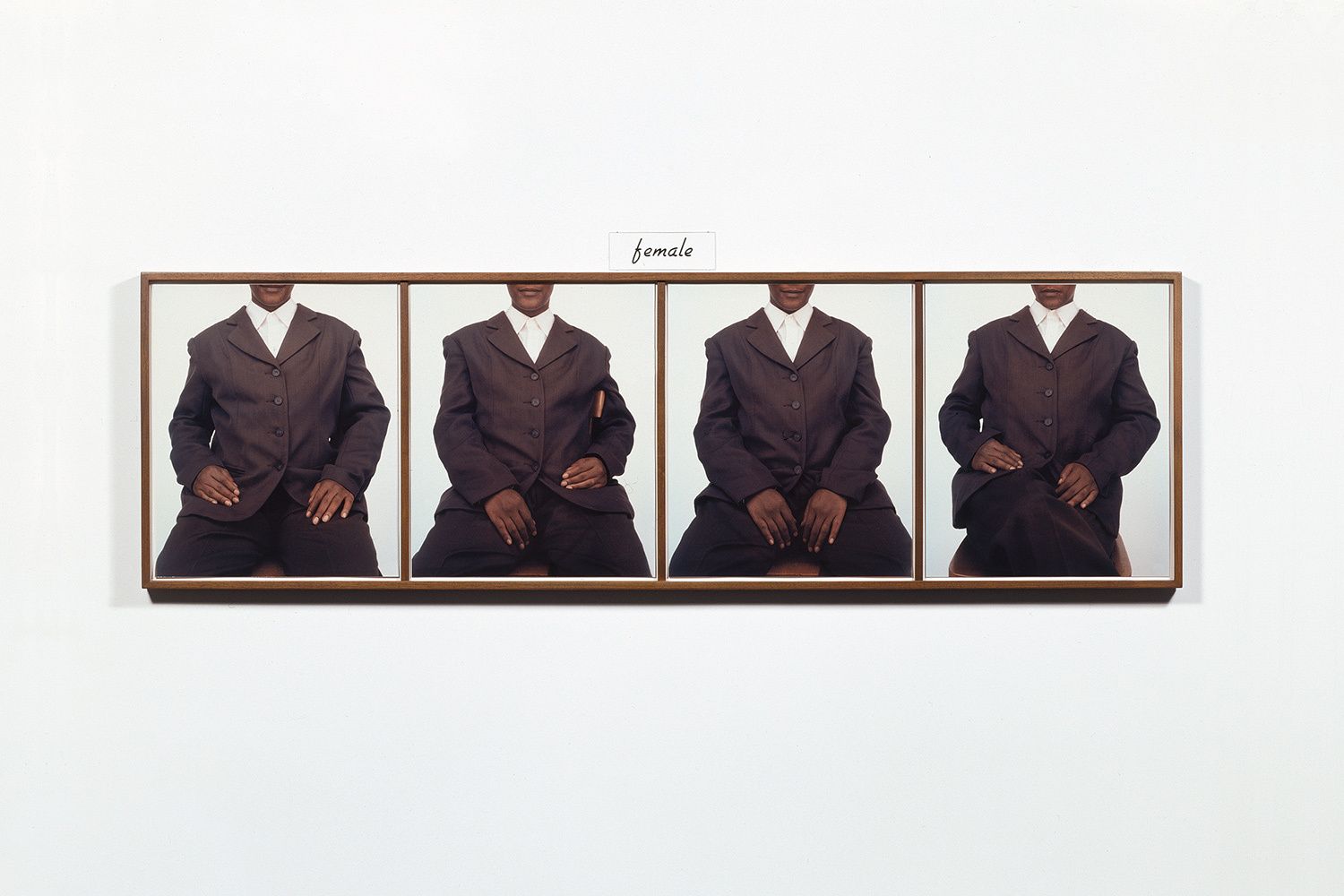Introduction
Lorna Simpson is popular for her artwork documenting real-life conditions through symbolic figures or allegory. Despite Simpson providing subtle hints for the viewer as the potential meanings of her artworks, her pieces both demand and require the viewer’s attention and active participation when interpreting her work. Race, social “norms,” and economic disparities in the African American community are among the many topics in which Simpson’s art relates. However, in her piece “She,” Simpson focuses on challenging the construct of gender and questions society’s idea of femininity and how society thinks there is a direct link between codes of dress and femininity.
Image Blocking
Simpson often uses the image blocking technique in many of her pieces to represent and break down socially constructed oppositions – female/male, internal/external, etc. By breaking down these oppositions created within society, Simpson re-molds these seemingly opposite archetypes into equal counterparts.
The image blocking can also be viewed as a representation of the subject’s social identity and their inner self. For example, the subject’s social identity is that of a female, but their inner self is expressed through their choice of clothes and the so-called masculine gestures the subject makes in each photograph.
Feminine Codes of Dress + Feminine Stereotypes
Through the constructs created by clearly gendered stereotypes, society has contrived specific codes of dress that are delineated by one’s sex. Simpson directly confronts this idea and opposes these feminine stereotypes and gendered codes of dress. Although the subject’s sex is identified as female, some viewers would question this fact due to the subject’s outfit. The suit symbolizes a challenge to society in the expression of non-conforming codes of dress of non-conforming femme bodies and directly opposes the constraints of feminine stereotypes.
